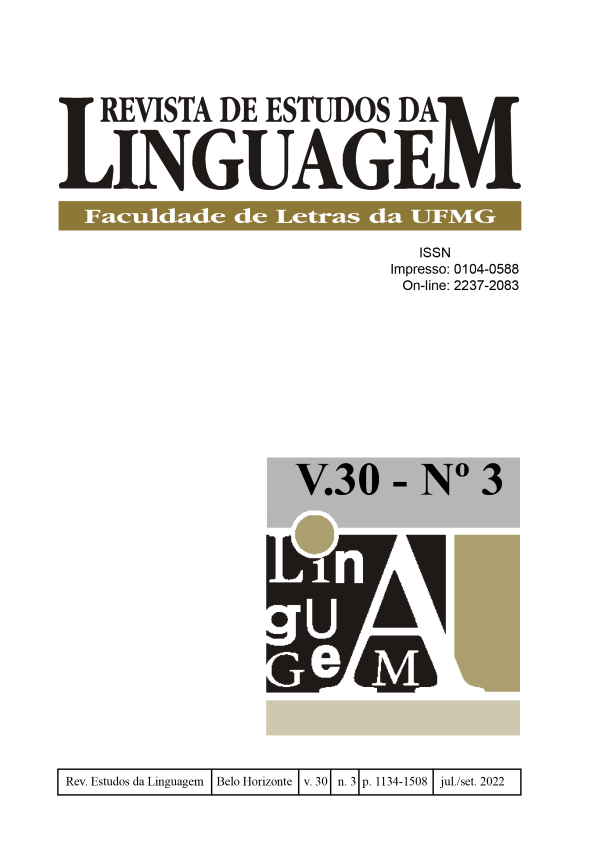The Syllable in Libras
an Investigation From the Phonological Proposal MLMov
DOI:
https://doi.org/10.17851/2237-2083.30.3.1238-1277Keywords:
libras, phonology, syllable, MLMovAbstract
In this paper, we aim to make an analysis of the syllabic structure of libras, from the assumptions established about oral languages and about sign languages, especially about the American Sign Language (ASL). Therefore, in an attempt to demonstrate relevant aspects that corroborate the understanding of the syllable in libras, important works on the syllable in this language are resumed, such as those by Cunha (2011) and Aguiar (2013). In this paper, however, the methodological basis for such analysis follows the MLMov (Hand-Location-Movement) phonological model, proposed by Lessa-de-Oliveira (2012; 2019), which establishes that the articulatory structure of libras signs is constituted in four hierarchical levels. It also aims to identify the core of the syllabic unit of libras and describe there is or there isn’t functionality in the sound principle to identify this nucleus. It is verified that a functional criterion that is able to identify the syllabic core would not be the sonority, but the obligation. As a result, it is pointed out that a syllable in libras constitutes an MLMov unit, which may have the following combinations in its internal structure: [MLMov], [ML], [MMov] or [M]. Thus, it is finally understood that the segment present in all MLMov units of sign components is Hand, which is therefore the syllabic core in this language.




 Esta obra está licenciada com uma Licença
Esta obra está licenciada com uma Licença 